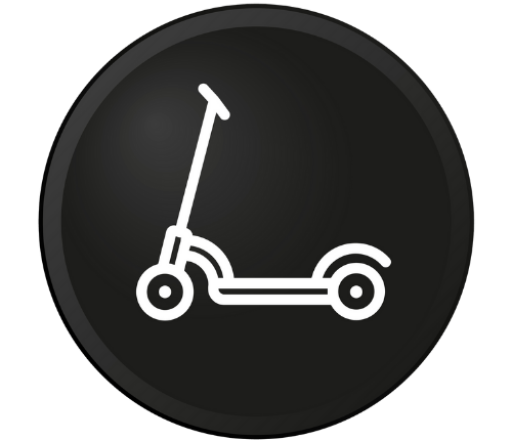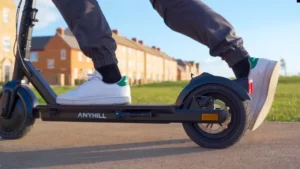Are you tired of your scooter’s brakes failing you when you need them the most? Don’t let a faulty brake system ruin your ride – it’s time to take matters into your own hands! This blog post will show you how to check and adjust your scooter brakes for optimal performance.
Whether you’re a seasoned rider or just starting, learning these simple tips will help ensure that every adventure on your trusty two-wheeler is safe and worry-free. So grab your tools, and let’s get started!
Introduction to Scooter Brakes
There are two types of scooter brakes: mechanical and hydraulic. Hydraulic brakes are the most common type, usually found on larger scooters. Mechanical brakes are less standard but often found on smaller scooters.
To check your scooter’s brakes:
- Start by looking at the pads. If they’re worn down, replace them.
- Check the brake fluid level and top it off if it’s low.
- Inspect the brake lines for any leaks or damage.
If you need to adjust your scooter’s brakes, check the owner’s manual for specific instructions. In general, you’ll need to loosen the bolts that hold the brake pads in place. Then, move the pads closer to or further away from the rotor until they’re in the correct position. Tighten the bolts back down and test the brakes before riding again.
Types of Brakes and How They Work
Two main types of brakes are used on scooters: hub brakes and disc brakes. Each type has its pros and cons, so choosing the right type for your scooter depends on your needs is essential.
Hub Brakes: Hub brakes are the most common type of brake used on scooters. They’re simple to maintain and relatively inexpensive, making them a good choice for budget-conscious riders.
Hub brakes use friction to slow down the wheel, so they tend to wear out faster than other brakes. They also need to work better in wet or muddy conditions since the friction pads can quickly become clogged with debris.
Disc Brakes: Disc brakes are more expensive than hub brakes but offer better-stopping power, especially in wet or muddy conditions. Disc brakes work by using calipers to squeeze a metal disc (or rotor), which slows down the wheel.
Since there’s no direct contact between the brake pads and the wheel, disc brakes tend to last longer than hub brakes. However, they’re more complex to maintain and repair, so there may be better choices for budget-conscious riders.
Checking Your Brakes
It’s essential to regularly check your scooter brakes to ensure they are in optimal working condition. Here’s a step-by-step guide on how to do a brake check:
1. First, visually inspect your brakes for damage or wear and tear. If you see any cracks or fraying, it’s time to replace your brake pads.
2. Next, check the brake fluid level and top it off if necessary.
3. Now, it’s time to test the brakes by giving them a few firm pumps while the scooter is parked. If they feel spongy or unresponsive, there could be an issue with the brake line or caliper that needs to be addressed.
4. Finally, take your scooter around the block and pay attention to how the brakes feel when you use them. If they don’t feel as strong as they should, or if you hear any strange noises, make an appointment with a qualified mechanic to have them take a look.
Adjusting Your Brakes
If your scooter brakes are not performing as well as they used to, it may be time to adjust them. You can check the performance of your brakes by looking at the brake pads. If the pads are worn down, they will need to be replaced. You can also check the brake fluid level and condition of the brake lines.
If you need to adjust your brakes, loosen the bolts holding the brake caliper. Then, you can move the caliper closer to or further away from the rotor. Once you have adjusted the caliper, you can tighten the bolts back up. Be sure to check your owner’s manual for specific instructions on adjusting your particular scooter brakes.
Replacing Your Brake Pads
If your scooter brake pads are worn down, it’s time to replace them. Doing so is easy and only takes a few minutes. Here’s how:
1. Start by removing the old brake pads. You’ll need a Phillips head screwdriver for this. First, loosen the screws that hold the brake pad in place. Then, pull the pad away from the caliper. Repeat on the other side.
2. Next, clean the area where the pads sit with a rag or brush. This will help ensure that your new pads adhere properly.
3. Now, it’s time to install the new pads. Line them up with the caliper and tighten the screws back into place. Please make sure they’re snug, but don’t over-tighten them.
4. Finally, test your handiwork by giving the scooter a few practice stops. If everything feels good, you’re all set!
Braking Tips and Tricks
Properly functioning brakes are essential to the safety of you and your scooter. Here are some tips and tricks on how to check and adjust your scooter brakes for optimal performance:
1. First, visually inspect your brake pads. If they appear worn down, it’s time to replace them.
2. Next, check the brake fluid level and top it off if necessary.
3. Then clean the brake calipers with brake cleaner to remove dirt or grime buildup.
4. Finally, adjust the brake pads to be evenly spaced between the rotor and caliper. Doing this will ensure optimal braking performance.
Conclusion
There you have it! By following these steps, you can be confident that your scooter brakes are working perfectly and providing the best possible performance.
Remember to check your brakes regularly and make any necessary adjustments according to the manufacturer’s instructions to keep them running smoothly. With a little bit of maintenance, your scooter will be able to handle any terrain with ease. Happy riding!



